|
|
|
Thames and Hudson
|
This new series in a square format sends the reader on a journey across European metropolises. Thereby, the attention is focused not on prominent buildings at large but on ingenious and extraordinary details. Each title focuses on a different constructional element. The first three volumes present doors, windows and facades from all architectural epochs and styles. Every one includes about 700 photographs that illustrate the diversity of European art of building. Whether new or old, nice or bizarre here the reader will find an architectural kaleidoscope of a special kind. |
|
“An essential guide.”—Seattle Post-Intelligencer For this new edition, Charlotte Cotton brings the story of contemporary art photography up to date with a chapter on artists who emphasize the physical and material properties of photography, who use photography as just one component in their pan-media practice, or who choose to experiment with new modes of dissemination for their work. Featuring significant and established art photographers such as Isa Genzken and Sherrie Levine alongside a younger generation that includes Florian Maier-Aichen, Sara VanDerBeek, and Walead Beshty, Cotton points to the diversity and energy of art photography in this century. 210 color, 32 b&w illustrations |
|
«Seeking the innermost self in her photographs, Kuhn achieves a mood of intimacy by photographing up close models she knows well. Her photographs are a product of lasting relationships built on mutual affection. In a sense, the images are based on the memory of shared experiences.» — Julie Nelson The people in Mona Kuhn's photographs are nude but not naked. Completely relaxed before the camera, they give the impression that nothing could clothe them better than their own skin. With a unique style, Kuhn's intimate photographs of both young and old are sensual compositions of skin and wrinkles, light and shadow, gestures and gazes. She creates taughtly composed images and balance sharply rendered portraits against blurred backgrounds to lure the eye and provoke the imagination.» |
|
An introduction to the basic principles of pattern cutting, this practical book shows students how to interpret the human form and look at clothing through the eyes of a designer rather than a consumer. As well as explaining the proportions of human anatomy, the book introduces key tools and then takes the reader from simple pattern-cutting ideas to more advanced creative methods. Step-by-step illustrations show how to create basic bodice, sleeve, skirt, dress and trouser blocks, before demonstrating how to adapt these to create patterns for original designs. There is also a chapter dedicated to digital technology and how this is increasingly being used in both colleges and industry. The book also examines a selection of the author's own creative designs, encouraging experimentation with the potential of pattern cutting. |
|
This miscellany of mysterious objects celebrates the beauty of simple, useful things. If you have ever thatched a roof, measured a skull, stuffed a rabbit or walked on a whale, you may well recognize some of these tools. If you haven't, but admire the work of, say, Miro, Duchamp and Cornell, you will appreciate these accidental masterpieces of the everyday. These are the tools of life, some developed according to our basic human needs, some for less obvious ends, still others from vanishing trades, yet all display a beauty and meaning beyond their function. There is something in these objects that will touch the designer, artist, inventor or collector in us all. |
|
A childhood encounter with a crow at a zoo led to a lifetime fascination with avian life for the American artist Jim Dine. This encounter with the bird was perceived by the young Dine with a mixture of fear, fascination and a deeper understanding of his unconscious world, and from it grew a mythic personal symbolism, which he explores in Birds, a series of remarkable black-and-white photographs. Here, an everyday, unspectacular bird might appear to the beholder as a character of mythology, as a jester at a Medieval court, or as a strange messenger from a world behind the scenes. These are rich, intimate, darkly detailed images imbued with symbolism and meaning. They are also beautiful and compelling, particularly as published in this spectacular volume, which, with 36 images printed using a technique called heliogravure, and with a Japanese binding, is a truly beautiful object in itself, and reveals a new aspect of Dine's work. |
|
«What do flowers, skulls and contact sheets have in common? Not much you might think, but David Bailey begs to differ. This book combines Bailey's recent colour photographs of still-life flowers and skulls, with black and white contacts of his iconic celebrity portraiture and fashion work from the 1960s. One might analyze Bailey's combination of these bodies of work in light of the vanitas tradition, seeing it as a commentary on mortality and the passing of time. Indeed such a reading is tempting when comparing images of wilting roses with contacts of Brian Jones and John Lennon, both of whom appear confident in the prime of youth, unaware of the fates that will befall them. But perhaps this is too much, and Bailey himself would probably tell you so. For him, the flowers, skulls and contacts are simply different projects that he was working on simultaneously and decided to combine because he likes the idea of «eclectic collections». Enough said.» |

|
In 1994, suffering from aching knees and painfully concerned about it, Lee Friedlander decided to prepare himself for a sedentary life. He began to pursue the still life as a possibility and maybe a way of photographic life a dramatic shift for a man who has spent his life photographing on the street, in the woods, on the road, at parties, anywhere but sitting down. He tried a variety of subjects with a few good results, but nothing stood out until he began to look at the fresh flowers that his wife Maria placed around their home in cut-glass vases. But never mind the flowers. True to Friedlander's style, he very quickly found himself most interested in the stems. During the months of February, May, June and December of 1994, he focused his lens on wild arrays of stems and the optical splendor produced by light refracting through the glass vases that contained them. In 1998, Friedlander had both of his knees surgically replaced. Three months of recovery time passed during which he took no pictures, the only gap in almost 50 years of working. The next year, successfully rehabilitated and walking without pain, Friedlander decided to re-apply himself to the stems and finish them off as a subject. Published in a lush, oversize volume, printed with a special drytrap process, Stems is the result of this unusual saga in the photographer's career. Lee Friedlander and his camera have now returned to the street. |
|
Japanese contemporary artists have mined some distinctive territory in the past decade or two--from the Superflat movement, to the referencing of traditional art objects like scrolls or contemporary pop phenomena like manga. Within these conventions, certain themes continually surface--nature in conflict with the manmade world, costuming and the search for personal identity and the child as cultural icon. Heavy Light identifies these themes as they are evidenced in recent Japanese photo-based art, and examines how they are reshaping Japanese tradition. This volume is published in conjunction with the major Spring 2008 exhibition at New York's International Center of Photography, which includes a diverse selection of artists: Makoto Aida, Naoya Hatakeyama, Naoki Kajitani, Hiroh Kikai, Midori Komatsubara, Yukio Nakagawa, Asako Narahashi, Tsuyoshi Ozawa, Tomoko Sawada, Risaku Suzuki, Miwa Yanagi, Kenji Yanobe and Masayuki Yoshinaga. Also featured in this volume are extensive interviews with the artists, offering accounts of their working methods and their thoughts on the influence of contemporary art on Japanese culture during the last several decades of rapid change. In addition, art historian Linda Nochlin and writer Akiko Otake provide invaluable essays. |
|
This much acclaimed book, newly available in paperback, is the definitive retrospective of the most popular serious artist in the world today, covering all media over almost fifty years. Presented thematically to show the evolution and diversity of Hockney's prolific paintings, drawings, watercolours, prints and photography, it also features quotes from the artist himself that illuminate the passionate thinking behind the works produced. Its huge international success confirms Hockney's position as the world's most popular living artist. |

|
Part of a new series built on the authority of Rob Thompsons highly acclaimed Manufacturing Processes for Design Professionals, this book features new content selected specifically for the needs of students who create prototypes, designs for low-volume production runs, and designs that utilize craft. With some 450 specially commissioned photographs and technical illustrations, it describes more than 30 manufacturing processes, from the traditional and established to emerging technologies. |

|
David Bailey flew to Afghanistan earlier this year to take photographs for auction to raise money for Help for Heroes, a charity that aims to help wounded servicemen and women returning from Afghanistan. The result is his latest book of photographs, a fitting celebration of Britains fighting heroes, showing life inside both inside Camp Bastion and also outside the perimeter, where real danger is ever-present. Dylan Jones, editor of GQ, who accompanied Bailey on the trip, provides a well informed and engaging foreword on life in the camp. All sales of this book will benefit Help for Heroes. |
|
Warhol's charming animal drawings, now available again. It was 1953 when, not long after arriving in New York City, a young artist named Andy Warhol had begun to make his way in the world of commercial illustration. As Arthur Edelman, his former employer, relates in his introductory note, “In a hallway of the Empire State Building, outside a shoe manufacturer’s office, stood a young man with Jackson Pollock shoes, a rumpled black suit, a portfolio, and a shock of white hair.” Over several years, the Edelmans and Warhol worked closely together. Their relationship culminated in a coloring book that could have only come from the mind of Warhol, created especially for clients’ children for Christmas in 1961, and somewhat of a cause célèbre when it was published in 1990. Now back in print, A Coloring Book: Drawings by Andy Warhol will amuse and charm a new audience with its delightfully carefree menagerie. |
|
The efficiency of getting around by bike has made cycling a popular pursuit of city life. More recently, biking and street style have come together to form an entire spectrum of urban self-expression. From gritty messengers to tweed-sporting bankers, from Pashley princesses to high-tech roadies, cycle chic is everywhere you look. This colorful compendium offers snapshots from around the world of everyday riders who are redefining bike fashion and emphasizing the accessibility and fun of city cycling. Targeted at the style-conscious of all stripes, this ingenious collection presents charismatic combinations of individual style and practical function. |
|
World English, except France, Belgium, Switzerland and Austria For over thirty years, The New York Times Magazine has presented the myriad possibilities and applications of photography. Aperture is pleased to present the upcoming publication and exhibition. The New York Times Magazine Photographs, which reflects upon and interrogates the very nature of both photography and print magazines at this pivotal moment in their history and evolution. Edited by Kathy Ryan, long-time photo editor of the magazine, and with a preface by former editorial director Gerald Marzorati, this volume presents some of the finest commissioned photographs worldwide in four sections: reportage, portraiture, style, and conceptual photography, including photo illustration. Diverse in content and sensibility, and consistent in virtuosity, the photographs are accompanied by reproduced tear sheets to allow for the examination of sequencing and the interplay between text and image, simultaneously presenting the work while illuminating its distillation to magazine form. This process is explored further through texts offering behind-the-scenes perspective and anecdotes by the many photographers, writers, editors, and other collaborators whose voices have been a part of the magazine over the years. David Campany contributes a critical essay that provides an in-depth history of the magazines relationship to photography, contextualizing its contributions within the larger world of magazine work. Also addressed are issues of documentary photography in relation to more conceptual photography; the efficacy of story-telling; and what makes an image evidentiary, objective, subjective, truthful, or a tool for advocacy; as well as thoughts on whether these matters are currently moot, or more critical than ever. As such, The New York Times Magazine Photographs aims to serve as a springboard for a rigorous, necessary, and revitalized examination of photography as presented within a modern journalistic context. |
|
On 5 July 2009 a metal-detector user started to unearth some gold objects in a Staffordshire field. Thus began the discovery of the largest hoard of Anglo-Saxon gold ever found. Consisting of over 1600 items including fittings from the hilts of swords, fragments from helmets, Christian crosses and magnificent pieces of garnet work, The Staffordshire Hoard is set to rewrite history. This is just the beginning of the story. This is going to alter our perceptions of Anglo-Saxon England in the seventh and early eighth centuries as radically, if not more so, as the 1939 Sutton Hoo discoveries did; it will make historians and literary scholars review what their sources tell us, and archaeologists and art-historians rethink the chronology of metalwork and manuscripts; and it will make us all think again about rising (and failing) kingdoms and the expression of regional identities in this period, the complicated transition from paganism to Christianity, the conduct of battle and the nature of fine metalwork production to name only a few of the many huge issues it raises. Absolutely the metalwork equivalent of finding a new Lindisfarne Gospels or Book of Kells — Leslie Webster, former Keeper of the Department of Prehistory & Europe, the British Museum. The quantity of gold is amazing but, more importantly, the craftsmanship is consummate; this was the very best that the Anglo-Saxon metalworkers could do, and they were very good. Tiny garnets were cut to shape and set in a mass of cells to give a rich, glowing effect; it is stunning. Its origins are clearly the very highest levels of Anglo-Saxon aristocracy or royalty. It belonged to the elite — Dr Kevin Leahy. |
|
Jeanloup Sieff was the complete photographer. He was gifted in every arena of the medium: fashion and advertising, nude, reportage, portraits and landscape. Sieff claimed to be superficial and droll, without ever being very convincing, and left a rich collection of works created from the 1950s until the turn of the 21st century before his demise. He was a prodigiously productive artist and was often overtaken by the speed of the medium and his own success, normally short of the necessary time to delve into his archive. Hence many of the works published in this book have never been seen or previously published. With his characteristic sense of humour and light-hearted approach he wrote: my pictures are little black and white pebbles that I dropped on my way to adulthood, meant for leading me back to my adolescence. |
|
The twentieth century was that of the image, and the legendary photographer Henri Cartier-Bresson, born in 1908, was the eye of the century. Cartier-Bresson was always on the spot, recording historic events as they happened. His work focused on Mexico in the 1930s, the tragic fate of the Spanish Republicans, the liberation of Paris, the weariness of Gandhi a few hours before his assassination, and the victory of the Chinese Communists. It was he who fixed forever in our minds the features of famous contemporaries: Giacometti, Sartre, Faulkner, Camus, and others, their portraits captured for eternity at the decisive moment. An intensely private individual, Cartier-Bresson nonetheless took Pierre Assouline into his confidence over a number of years, discussing his youthful devotion to surrealism, his lifelong passion for drawing, his experience of war and the prison camps, his friends, and the women in his life. He even opened up his invaluable archives. |
|
Literature about Durer fills library shelves. Does this mean everything has already been said about the artist? Far from it, according to the scholars at the Germanisches National museum and their international partners in the Early Durer Project. This book deals with the core phenomena of Durers early work, ranging from the artists biography and surroundings to the question of Durers role as the archetype of the modern artist. New sociological approaches allow us to interpret Durers ideal neighbourhood as a source of inspiration for the artists work, resituating Durer in the artistic context of his time, at an exciting crossroad between the imitation of traditional painting and the self-conscious renewal of his profession. Photographs of Durers early work, many of which are new and published here for the first time, complete the publication, which will establish a new basis for a modern understanding of Germanys most famous artist. |

|
David Hockney (b. 1937) has always been closely associated with Pop Art and California, where he has lived for much of his life. This major study of his work, published to accompany the exhibition showing at the Royal Academy of Arts in London, redefines him as an important painter of the English countryside, presenting his recent landscapes for the first time. In an attempt to renew contemporary art, Hockney has returned to painting in the open air, observing with honesty and intensity the scenery of his childhood in East Yorkshire. Marco Livingstone explores this bold departure in the context of Hockney's sixty-year career, while other contributors address the artists place in the landscape tradition, his recent video works and their relationship to English landscape film-making, and his ongoing use of new technologies. Illustrated with paintings, iPad drawings and video stills, many of which have never been seen before, this landmark publication confirms David Hockney as one of the greatest artists of his generation. |
|